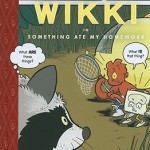Avoid Homework Hassles!
by Carmen Oliver, mother of three and homework monitor extraordinaire
Helping children with their homework doesn’t have to be a nightly battle. All it takes is a supportive environment, a few ground rules and, a consistent approach. Here are a few ways to ensure a year of homework success for your child:
- Know the homework policies of your child’s teacher and school.
Every teacher approaches assignments slightly differently and you can help your child avoid homework hassles by knowing ahead of time exactly what’s expected.
- Make sure your child understands WHY he goes to school and the rationale behind practicing concepts at home that have been taught in the classroom.
Explain skills and concepts by using examples your child will relate to (no one expects him to throw a spiral the first time he plays football—it takes practice). When children understand their responsibilities ahead of time, they’re less likely to argue, and more eager to please.
According to the National Education Association (NEA), homework habits established in the early grades develop study skills and keep families involved and informed about their child’s learning.
- Create a space at home free from television and/or computer distractions and squabbling siblings, a place conducive to learning where you’ll be able to assist, should your help be required.
 Keep the area well-lighted and stocked with the necessary supplies: pencils, crayons, paper, glue, and safety scissors. Involve your child in the process and they’ll be more apt to want to spend time in the place they helped create.
Keep the area well-lighted and stocked with the necessary supplies: pencils, crayons, paper, glue, and safety scissors. Involve your child in the process and they’ll be more apt to want to spend time in the place they helped create.
- Choose a time after school — a time your child will come to recognize as their homework time — and make it part of your daily routine.
Plan ahead when you know after-school activities may affect your routine, and avoid cramming multiple nights of homework into one evening. This can overwhelm even the most determined child!
- On nights homework is not assigned, play an educational game with your child, review concepts on the computer, or use the time to read.
Reading has so many benefits. It enriches language skills, builds confidence, aids academic success, and opens doors to new worlds. And today the World Wide Web and software companies offer thousands of games, dictionaries, and activities aimed to challenge kids, at every level, with the click of a mouse. In fact, many teacher and school websites provide reputable links to homework and educational sites.
opens doors to new worlds. And today the World Wide Web and software companies offer thousands of games, dictionaries, and activities aimed to challenge kids, at every level, with the click of a mouse. In fact, many teacher and school websites provide reputable links to homework and educational sites.
- Based on the age and need of your child, be prepared to provide a “fun” break, if homework seems to take longer than expected.
University of Missouri psychology professor Harris Cooper, author of a pioneer study on the effect of homework on student achievement, suggests the following guidelines: “For children in grades K through 2, homework is most effective when it does not exceed ten to 20 minutes each day. Children in grades three through six can handle 30 to 60 minutes a day.”
While there is no one way to guarantee your child will complete assigned homework without a few moans and groans, your willingness to be involved, set the standards, and follow through will undoubtedly score you an A+ and help avoid some of the hassles of after-school homework blues.
Here are a few additional resources to help minimize homework hassles:
U.S. Department of Education: Helping your child succeed in school
Homework Without Tears by Lee Canter
Homework Made Simple by Ann K. Dolin
And a few “homework” books children may enjoy, in hopes that reading about other kids’ homework problems, might make their own seem like more fun.
Homework by Arthur Yorinks, illustrated by Richard Egielski
Return of the Homework Machine by Dan Gutman
Zip, zip … homework! by Nancy Poydar
Zig and Wikki in Something Ate My Homework by Nadja Spiegelman, illustration by Trade Loeffler
Fancy Nancy, the Dazzling Book Report, by Jane O’Connor
Carmen Oliver lives in Round Rock, Texas where she’s the mother of three children and homework monitor extraordinaire. She’s published articles for kids, been an education columnist for AUSTIN FAMILY, and writes early readers, picture books, and chapter books.










